Hakgala Botanical Garden
At a distance of 6 km from Nuwara Eliya Bus Stand, Hakgala Botanical Garden is a well-maintained garden in Nuwara Eliya, Sri Lanka. Situated on the Nuwara Eliya-Badulla main road, it is the second-largest botanical garden in Sri Lanka and among the top places to visit in Nuwara Eliya as part of the Sri Lanka Tour.
Hakagala Strict Natural Reserve
Hakgala Botanical Gardens is located within the Hakgala Strict Natural Reserve.
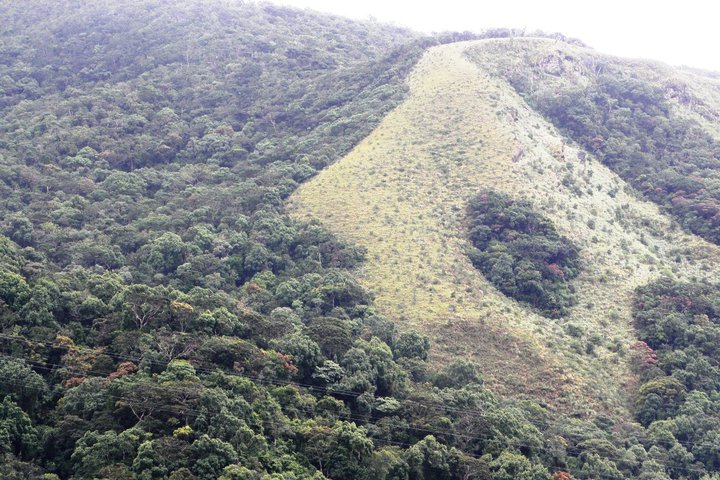
Mythology
The rock of Hakgala (Jaw Rock) rises 450 meters (1500 feet) above the gardens & believed to be one of the two places (the other being the cave at Ella) where King Rawana held Sita, consort of Lord Rama of great Indian epic Ramayana. The soil of the area around Sita Eliya temple close to the Gardens is darker than elsewhere in the island. According to the legend, it was in this area Lord Hanuman, in his rage, wreaked havoc on the villages & the forests: his tail was set on fire by King Rawana. The darkened soil is said to be no accident or design of nature. The strange circular depressions in the rock by the adjacent stream are believed to be the footprints of King Rawana’s elephant. Of course, all of these tales belong to Mythology in Sri Lanka.
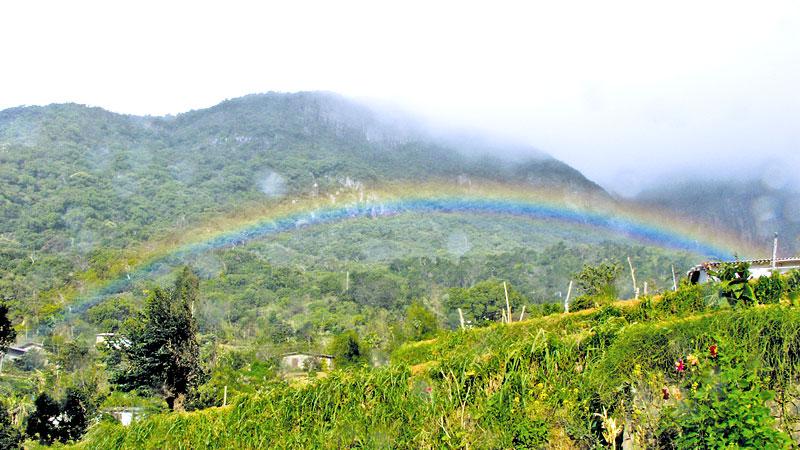
The Gardens
The Gardens (27ha) were established in 1860 as an experimental Cinchona plantation from which the anti-malarial drug quinine is derived. Subsequently the gardens were used for experiments in acclimatizing temperate-zone plants to life in tropics. Today Hakgala’s gardens of roses, shrubs, ferns & montane woodland are delightfully located in salubrious environment, with small streams running across & wooden bridges built over them with birds flying all over. The charm of the Gardens, cold & shady atmosphere & enchanting sceneries soothes your mind relieving you of your anxieties. The gardens sprawl up the steep hillside, ranging from the anodyne ornamental areas around the entrance to the far wider & more interesting forests up the hills. The best views are from the steps & path on to the right immediately after the entrance gate that lead through the azalea garden up to a little pavilion.
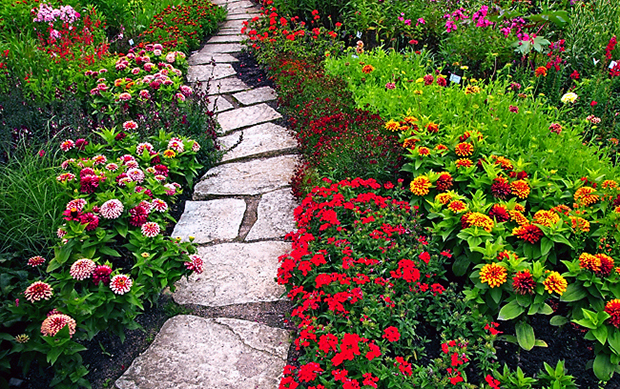
The Spice garden
The shady Spice garden to the right on main entrance bears a fine selection including cinnamon, cardamom, and nutmeg. Some of the oldest nutmeg trees planted in the year 1840 still in fine fettle.
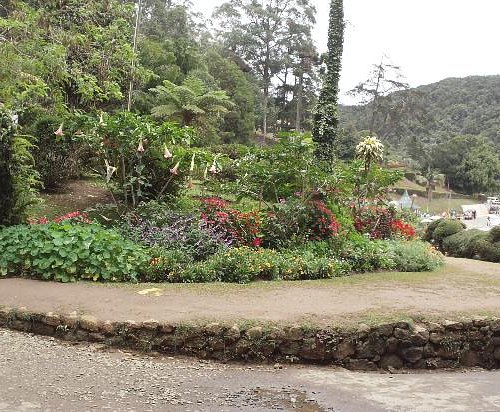
The Rose Garden
The Rose Garden, twin terraced block of land is home to more than 100 varieties of Roses. Some of the varieties of the Roses were imported & planted by the British colonial rulers of then Ceylon. The glass house, indoor garden displays blooming species & varieties of Begonia, Peperomia, Saintpaulia, Primula, Glaxinia, Steptocarpus & Pelargniu.
.

The Orchid House
The orchid House shows off a captivation of exotic blooms of Cattleya, Dendrobium, Arachnis, Oncidium, Phalaenopsis, Vanda & their hybrids. Around the orchid House are several hardy orchids including the largest orchid in the world (Grammatophyllum speciosum) which produces a flower spike up to 2.5 m long & the green orchid (Coelogyne meyeriana)
.
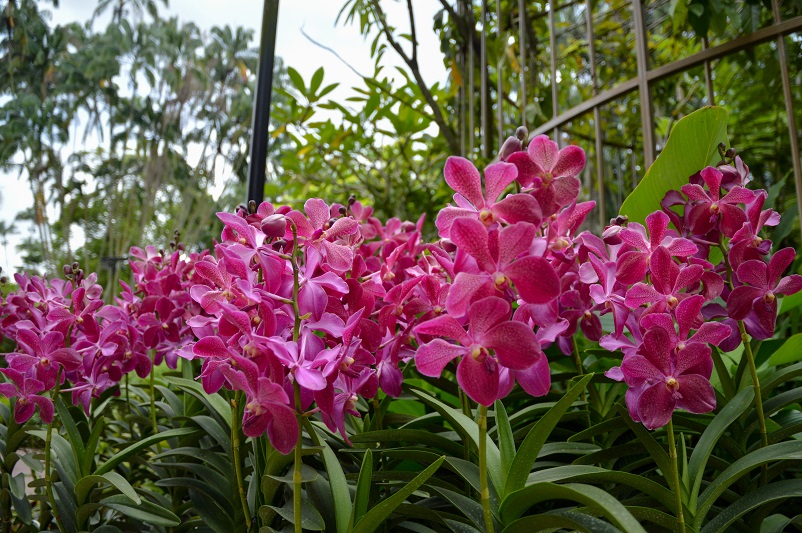
Small Plant House
Close to the Orchid House is a small Plant House containing a variety of greenhouse plants such as ferns, begonias, African violets, Episcia diffenbachia, Phildendron bromelia & Anthuriaum.
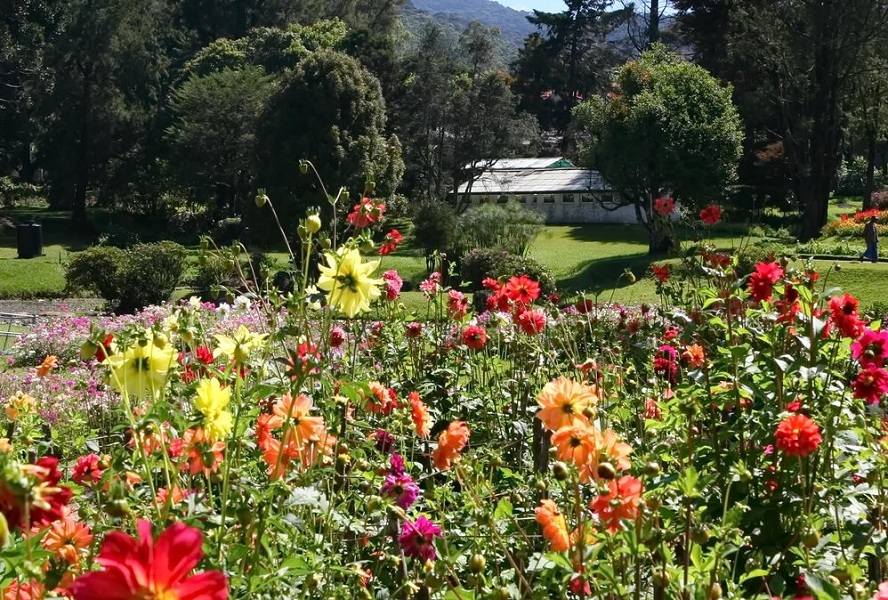
The Cactus House & the Flower Garden
The Cactus house exhibit over 800 species including Agaves, Opuntia, Kalachoe, Cereus, Rebutia, and Rhipsalis while the Flower Garden displays numerous annual flowers arranged according to the height & colour of the plants.

The fernery
The fernery provides shaded atmosphere. Among the ferns are Tree fern (Cyathea crinita). Many species of native ferns grow in the shades of tall trees. This section also house old bushes of Tea (Camellia sinensis), which were used for experimentation of tea cultivation in hill country. This collection forms the very introduction of Assam tea hybrid brought to Ceylon in 1967.
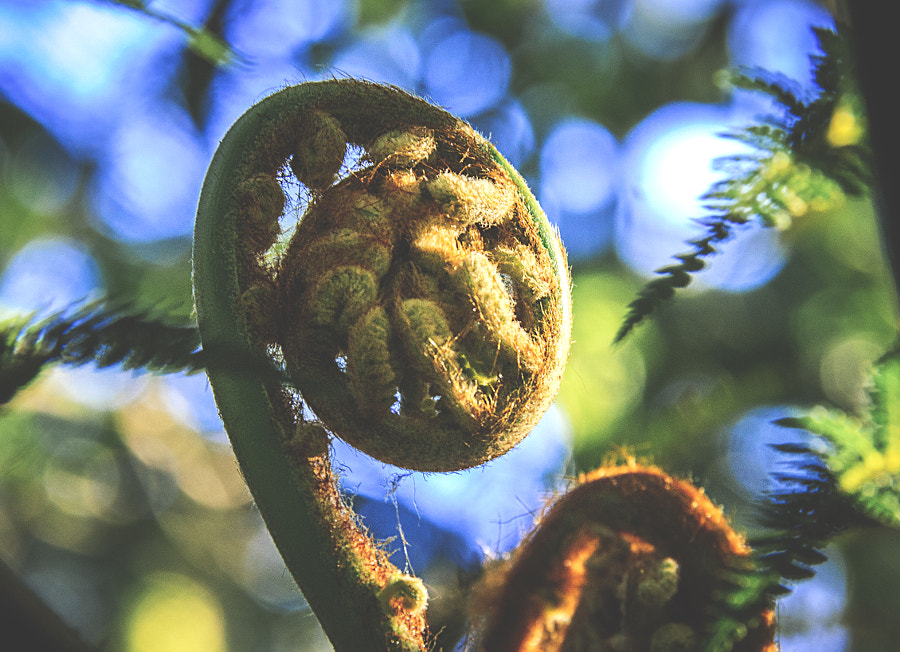
Rock garden
The main rock garden established in 1921, provides an environment for many kind of herbaceous plants. These plants thrive well in beds laid out among rock & boulders. The pond below the sloppy lawn is home to water lily (Nymphea maxicana).
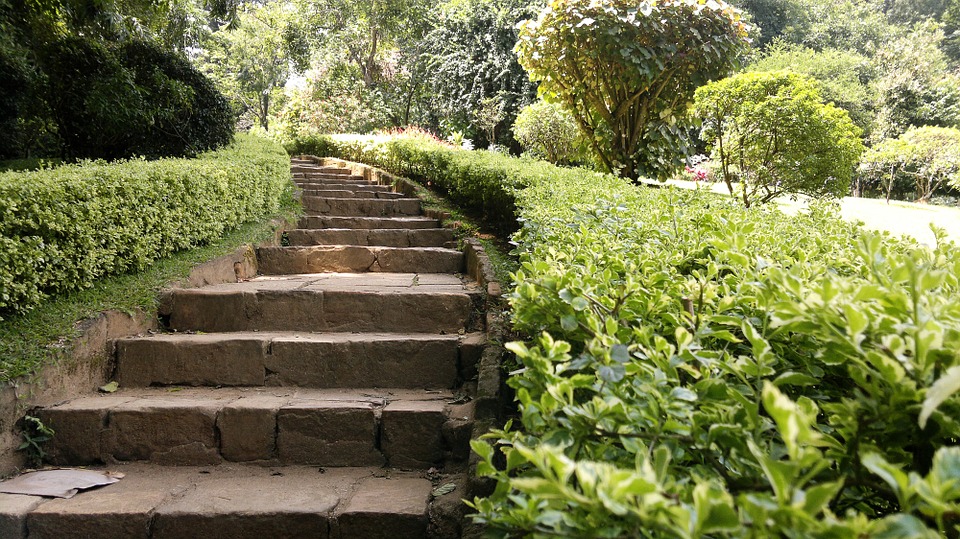
The arboretum
The arboretum is one of the most important sections of the garden. This section covers a large area behind the rock garden. Various native species as well as species introduced from subtropical countries abound herein.
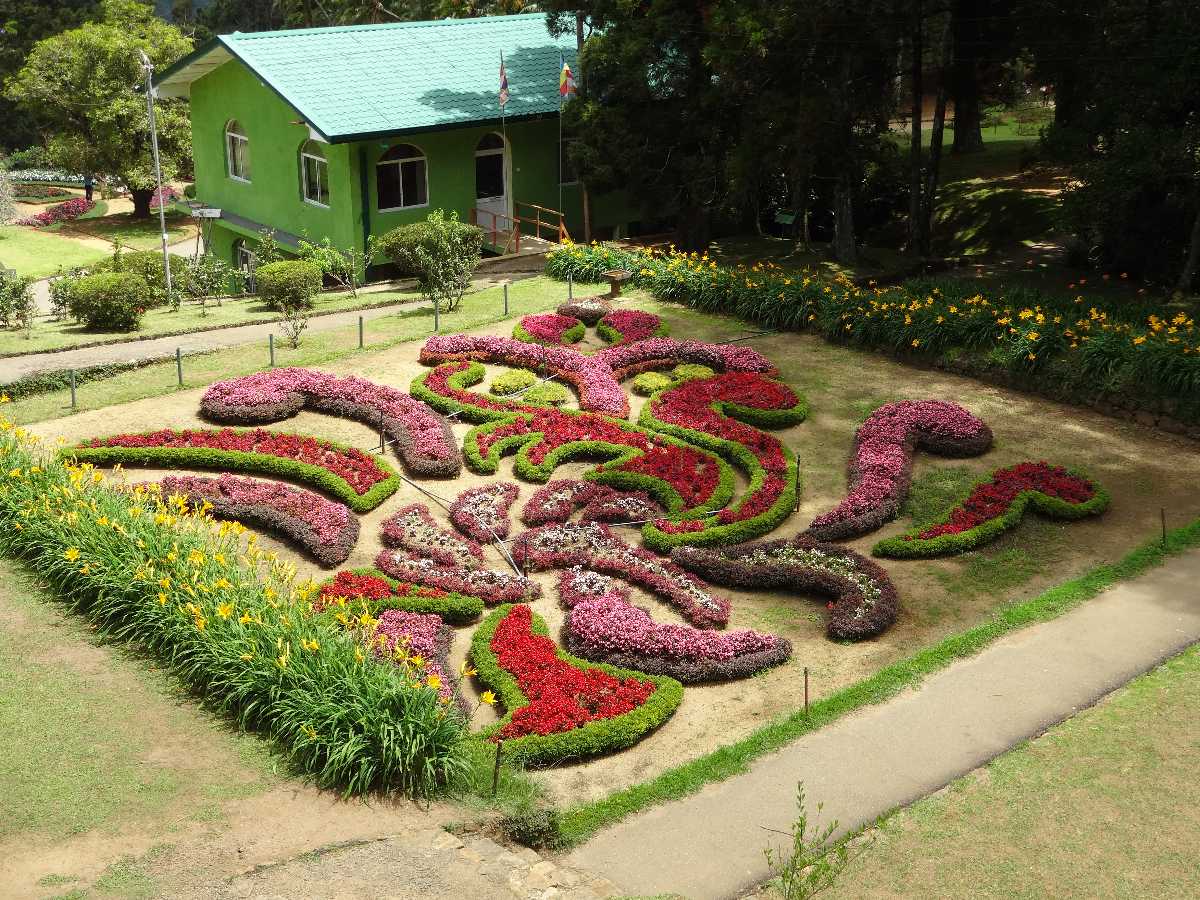
Bulb garden
Bulb garden established in 1924, contains a collection of subtropical bulbous plants like Lillum varieties, Watsonia, Agapanthus varieties, Galdiolus, Hemerocallis, Amaryilis, Alstremeria & Zantedeschia.

The wooded areas
The wooded areas of the gardens include numerous majestic Monterey cypresses from California, U.S.A & fine old cedars. There are areas of enormous tree ferns, stands of Japanese camphour, & pines & eucalpyts, a shaggy cluster of bark-shedding Australian melaleucas.
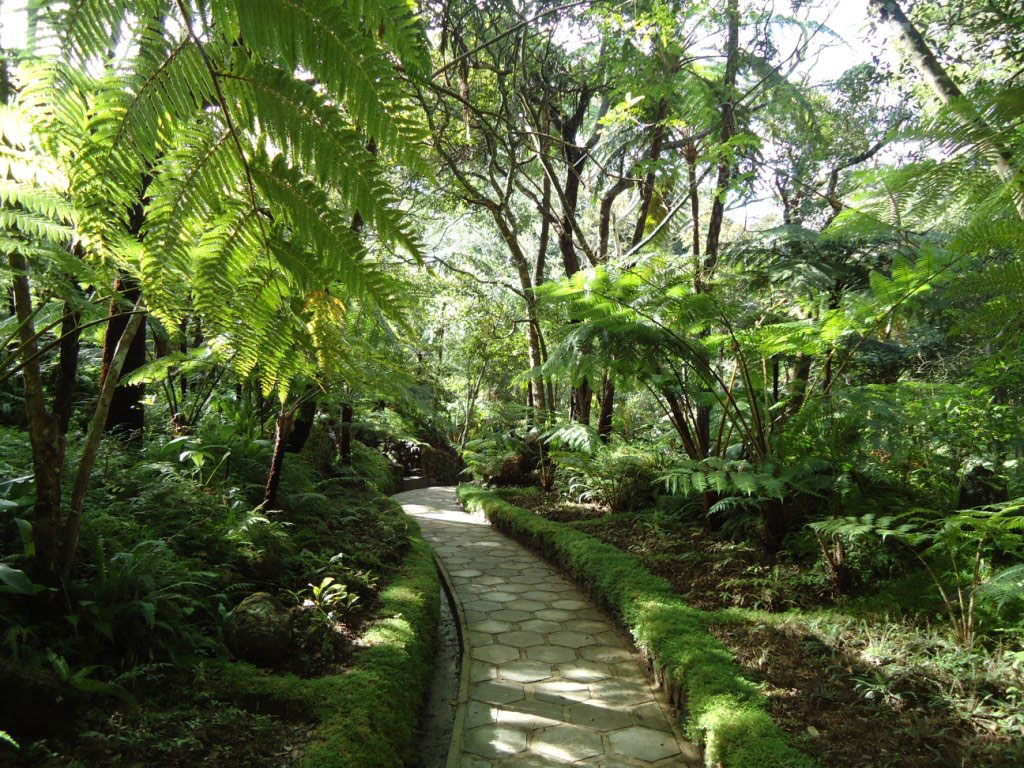
Endemic montane bird species
The garden is also one of the best places in the island to spot endemic montane bird species & migratory birds during the North-East monsoon.
Among the indigenous birds are Sri Lanka wood pigeon, Southern crow pheasant, Layard’s woodpecker, straked fan tail warbler, Yellow fronted barbet, Tickell’s flowerpecker (the smallest bird in Sri Lanka), Ceylon jungle fowl, Forest Eagle Fowl, Yellow-eared Bulbul, Southern Indian Black Bulbul, Green willow warbler, Grey-headed flycatcher, Black winged kite, Pintail snipe, Brown shrike, Black-headed Munia, Indian Tailor Bird, Jungle bush quail, Ceylon scimitar babbler, Dusky blue flycatcher, Ceylon munia, Large Ceylon white eye, Himalayan blue chat.
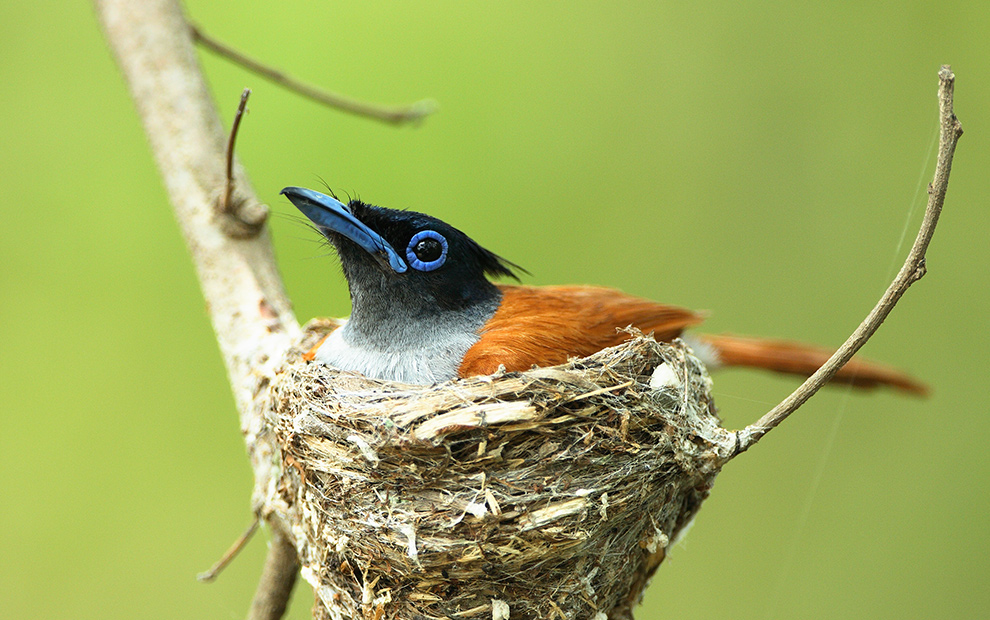
Migratory birds
Among the migratory birds are Grey wagtail, Pied ground thrush, bungalow swallow, Pied & brown shrike, Indian woodchat, Green willow warbler, Grey-headed flycatcher, Black winged kite, Pintail snipe, Brown shrike. Above the gardens, a forest trail leads into virgin woodland-the home of a troop of purple-faced leaf monkeys, a species endemic to the island, sambhur.
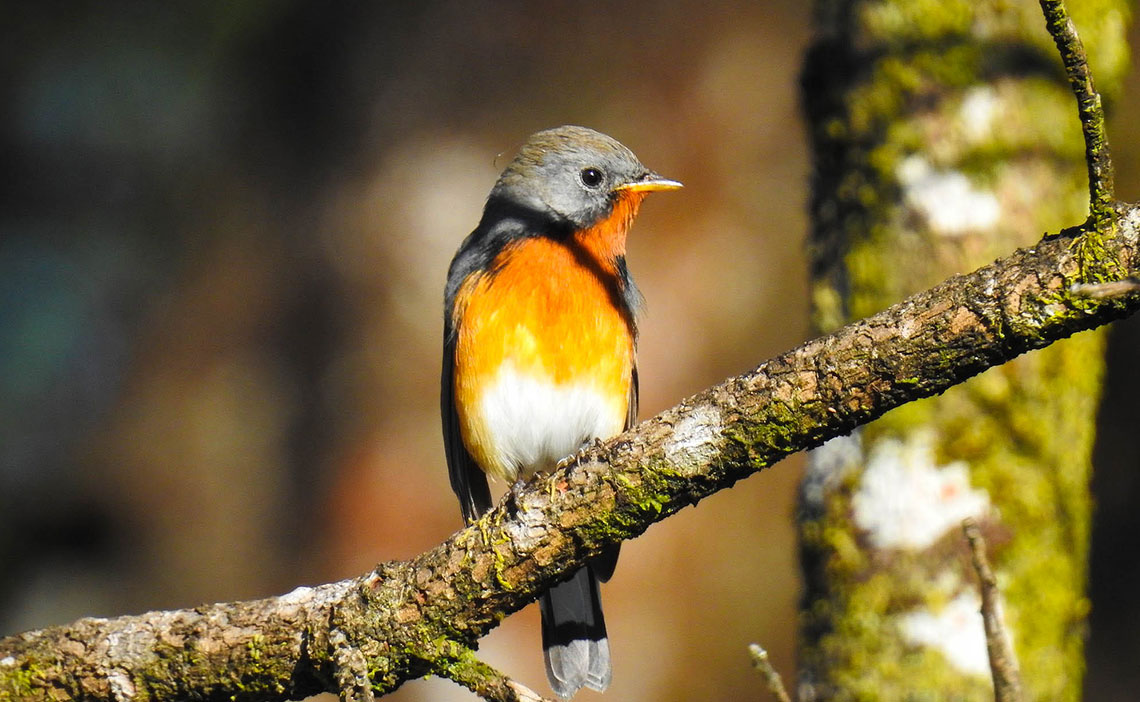
Popular Tourist Attractions Ticket prices